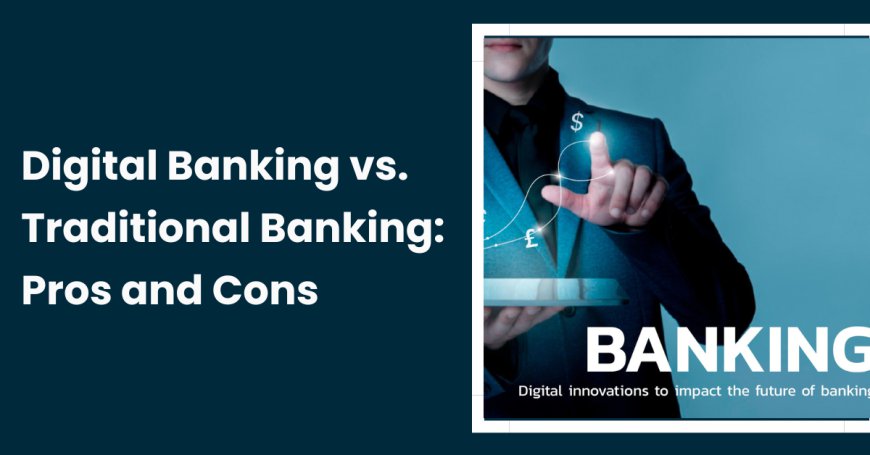Digital Banking vs. Traditional Banking: Pros and Cons

Banking has evolved dramatically over the years. Traditional banking methods, characterized by face-to-face interactions, now compete with the convenience of digital banking. As consumers explore their options, understanding the benefits and drawbacks of both approaches is crucial. This article also touches upon the role of NBFC Registration in the evolving financial ecosystem.
What is Traditional Banking?
Traditional banking refers to the brick-and-mortar banks we have relied on for decades. These banks offer various financial services, including loans, savings accounts, and personalized customer service.
Pros of Traditional Banking
-
Personalized Service
Customers can interact directly with bank staff, ensuring tailored solutions for complex financial needs. -
Trust and Security
Established banks provide a sense of trust, with strict compliance measures and in-person services. -
Comprehensive Offerings
Traditional banks offer a wide range of services, from safe deposit lockers to wealth management solutions.
Cons of Traditional Banking
-
Limited Accessibility
Bank branches operate during specific hours, restricting access for busy customers. -
Higher Fees
Overhead costs for branches often lead to higher service charges. -
Slow Processes
Paperwork and in-person approvals can delay transactions.
What is Digital Banking?
Digital banking is the modern alternative, offering financial services through online platforms and mobile apps. With the rise of fintech, even NBFCs (Non-Banking Financial Companies) are incorporating digital technologies, making NBFC Registration an essential step for new players in the market.
Pros of Digital Banking
-
24/7 Accessibility
Customers can perform transactions anytime, anywhere, without visiting a branch. -
Cost Efficiency
Digital platforms reduce operational costs, often resulting in lower fees for customers. -
Fast Transactions
Online banking ensures quick transfers, bill payments, and account updates. -
Innovative Features
Tools like AI-driven financial planning and instant loan approvals enhance user experience.
Also Read: Top 10 NBFCs in India
Cons of Digital Banking
-
Lack of Personal Interaction
Digital banking lacks the personal touch of face-to-face communication. -
Security Concerns
Cyber threats and hacking risks remain significant challenges. -
Technical Dependence
Access to services depends on reliable internet and functioning digital platforms.
Which Banking Option is Right for You?
The choice between traditional and digital banking depends on individual needs. While traditional banking is ideal for those who value in-person service and security, digital banking appeals to tech-savvy customers seeking convenience.
NBFCs are also bridging the gap by leveraging technology to provide financial solutions. If you're considering entering the financial sector, understanding NBFC Registration and its role in digital banking is crucial.
Conclusion
Both digital and traditional banking have their merits and drawbacks. As the financial industry evolves, consumers and businesses must assess their preferences and adapt accordingly. With innovations in NBFC Registration and digital banking, the future of finance promises greater inclusivity and efficiency.
